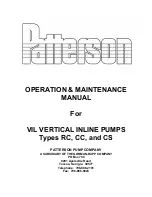
STEP 1
Disconnect power
from motor.
Unscrew voltage
switch cover.
STEP 2
Remove cover,
use screwdriver to
switch to appropri-
ate voltage setting.
115=100-120vac
50/60 hz
230=230-240 vac
50/60 hz
If you think there is excessive mois-
ture, blow out the AC&R system with dry
nitrogen wherever possible. This reduces
the amount of contaminants that must
be “pulled” into the pump and increases
evacuation speed.
Use a nitrogen regulator
valve with pressure limited
to 150 psi and a frangible
disc device set at 175 PSIG.
When the indicator reaches
the 29-30” range, turn
on the electronic micron
gauge for more precise readings.
Oil Changes: CHANGE OIL AFTER EACH
USAGE
to protect pump components from
contaminants pulled into pump during
service. Place used oil in a sealable
container and dispose properly in accor-
dance with local regulations.
STEP 3
Replace cover and
screw down by
hand. Do not use
drill as cover could
crack.
CAUTION
• Always remove cord before changing
voltage.
• Incorrect voltage setting can result in
destruction of controller electronics,
rendering motor inoperable.
• To maintain IP X2 rating, replace switch
cover to keep water out of controller.
• Over-tightening screw could result in
cracked cover.
6
8. Use a SuperEvac System I, II or III to
decrease vacuum
time by over 50%.
These systems
include a 2-valve
vacuum manifold
and two 3/8”
vacuum hoses which can evacuate
three times faster than a 1/4” hose.
9. Use a heat gun on the condenser and
evaporator to speed the evacuation
process.
Built-in Vacuum Gauge:
The built-in indicator
gauge in your pump
monitors evacuation
progress down to the
29-30” range. If the
reading stays in the mid range, there is
either high contamination or a large leak
in the system.
Gross Leak
Dual Voltage Motor Power Conversion (if applicable)
Turn on
Electronic Gauge
Warranty is void if the set vacuum pump voltage does not match the power supply.






























